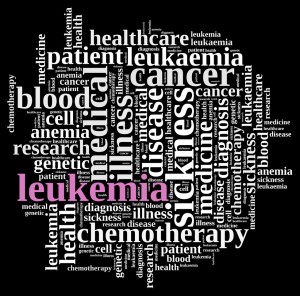 Cytotoxic chemotherapy followed by allogeneic bone marrow transplantation when feasible has been the standard of care for patients with relapsed or refractory B-cell precursor acute lymphoblastic leukaemia negative for the Philadelphia chromosome (Ph- ALL).
Cytotoxic chemotherapy followed by allogeneic bone marrow transplantation when feasible has been the standard of care for patients with relapsed or refractory B-cell precursor acute lymphoblastic leukaemia negative for the Philadelphia chromosome (Ph- ALL).
The prognosis for such patients, however, has been very poor, with median overall survival after relapse of just 4.5 to 6 months, and 5-year overall survival rates of 7% to 10%, according to guidelines from the National Comprehensive Cancer Network.
But as Max S Topp, MD, from the Universitätsklinikum in Würzburg, Germany reported at the European Hematology Association (EHA) 2016 annual congress in Copenhagen, Denmark, the monoclonal antibody blinatumomab (Blincyto) was associated with a near doubling in overall survival when compared with one of four standard chemotherapy regimens in adults with relapsed/refractory Ph- ALL.
T-cell Engager
Blinatumomab is a bispecific T-cell engage or “BiTE” antibody that directs cytotoxic T-cells to malignant cells expressing the CD19 receptor.
Topp and colleagues had reported at the 2012 American Society of Clinical Oncology annual meeting in a phase I study that 17 of 25 evaluable patients with relapsed/refractory B precursor ALL had either a hematologic complete remission (CR) or complete remission with partial recovery of counts (CRi) with the first two treatment cycles with blinatumomab.
Similarly, in a phase II single-arm study reported later that year at the American Society of Hematology Annual Meeting, of 36 patients, 25 (69%) had a CR or CRi, and 88% of the responders had minimal residual disease.
 The median overall survival was 9.8 months, and the median relapse-free survival was 7.6 months. Thirteen of the responders with a CR or CRi went on to have haematopoietic stem cell transplantation.
The median overall survival was 9.8 months, and the median relapse-free survival was 7.6 months. Thirteen of the responders with a CR or CRi went on to have haematopoietic stem cell transplantation.
At EHA 2016, Topp reported results of the TOWER study, a multicenter, open-label phase III trial.
A total of 405 patients with relapsed/refractory B-precursor Ph- ALL were randomly assigned on a two:one basis to receive either blinatumomab (271 patients) or standard chemotherapy (134), consisting of the investigator’s choice of one of four defined regimens based on either anthracyclines, histone deacetylase inhibitors, high-dose methotrexate, or clofarabine.
Patients were stratified by age, prior salvage therapy, and prior allogeneic stem cell transplant (alloSCT).
Blinatumomab was delivered in 6-week cycles consisting of continuous infusions of nine micrograms per day in week 1 of cycle one, then 28 micrograms per day for weeks 3-4, followed by 2 weeks off.
Patients were pretreated with dexamethasone for prophylaxis against the cytokine release syndrome.
Those patients whose disease was in remission after 2 induction cycles could be continued on therapy until relapse.
Trial Halted for Efficacy
The primary analysis had been planned to occur after 330 patients had died.
 But when a planned pre-specified interim analysis was performed after 248 patients had died, the independent data monitoring committee determined that the trial had met its primary endpoint of an improvement in overall survival.
But when a planned pre-specified interim analysis was performed after 248 patients had died, the independent data monitoring committee determined that the trial had met its primary endpoint of an improvement in overall survival.
In February 2016, the committee recommended — and Amgen, blinatumomab’s manufacturer — agreed that the trial should be stopped early for efficacy.
The median overall survival for patients treated with blinatumomab was 7.7 months, compared with 4.0 months for those who received standard chemotherapy.
Topp noted that the survival benefit seen with blinatumomab “was consistent in all subgroups that we were looking at, regardless of age, prior salvage therapy, or patients relapsing after an allo-transplantation.”
The monoclonal antibody was also associated with higher rates of CR and CRi than chemotherapy, with respective CR rates of 39% versus 19% and CRI rates of 46% versus 28%.
In addition to the superior survival rates, blinatumomab was associated with higher CR rates (39% versus 19%) and combined CRs, complete CRs, and CRi rates (46% versus 28%).
On-study deaths occurred among 19% of the patients assigned to blinatumomab, and 17% of those assigned to chemotherapy.
Grade 3 or greater adverse events of any type occurred in 37% of patients on blinatumomab and 30% of patients on chemotherapy.
Grade 4 events occurred in 31% and 44% of patients, respectively.
Grade 3 or greater adverse events of interest included neutropenia (38% versus 58%), infection (34% versus 52%), neurologic events (0% versus 8%), and the cytokine release syndrome (5% versus 0%).
Topp noted that “adverse events in the blinatumomab group were consistent with previous studies.”
[hr]
Source: ASCO



